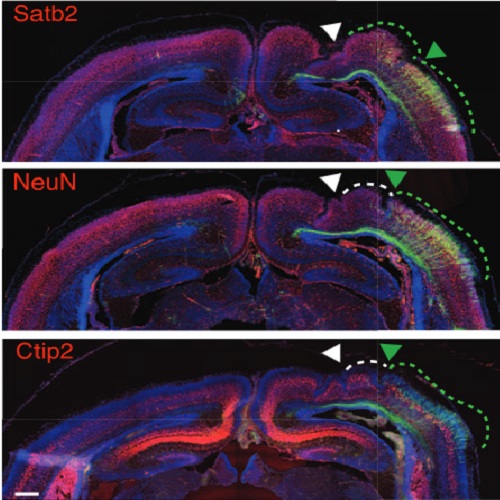Human-specific gene ARHGAP11B promotes basal progenitor amplification and neocortex expansion.
Evolutionary expansion of the human neocortex reflects increased amplification of basal progenitors in the subventricular zone, producing more neurons during fetal corticogenesis. In this work, we analyze the transcriptomes of distinct progenitor subpopulations isolated by a cell polarity-based approach from developing mouse and human neocortex. We identify 56 genes preferentially expressed in human apical and basal radial glia that lack mouse orthologs. Among these, ARHGAP11B has the highest degree of radial glia-specific expression. ARHGAP11B arose from partial duplication of ARHGAP11A (which encodes a Rho guanosine triphosphatase-activating protein) on the human lineage after separation from the chimpanzee lineage. Expression of ARHGAP11B in embryonic mouse neocortex promotes basal progenitor generation and self-renewal and can increase cortical plate area and induce gyrification. Hence, ARHGAP11B may have contributed to evolutionary expansion of human neocortex.

- Science 2015 Mar 27;347(6229):1465-70
- 2015
- Developmental Biology
- 25721503
- PubMed
Enabled by:
